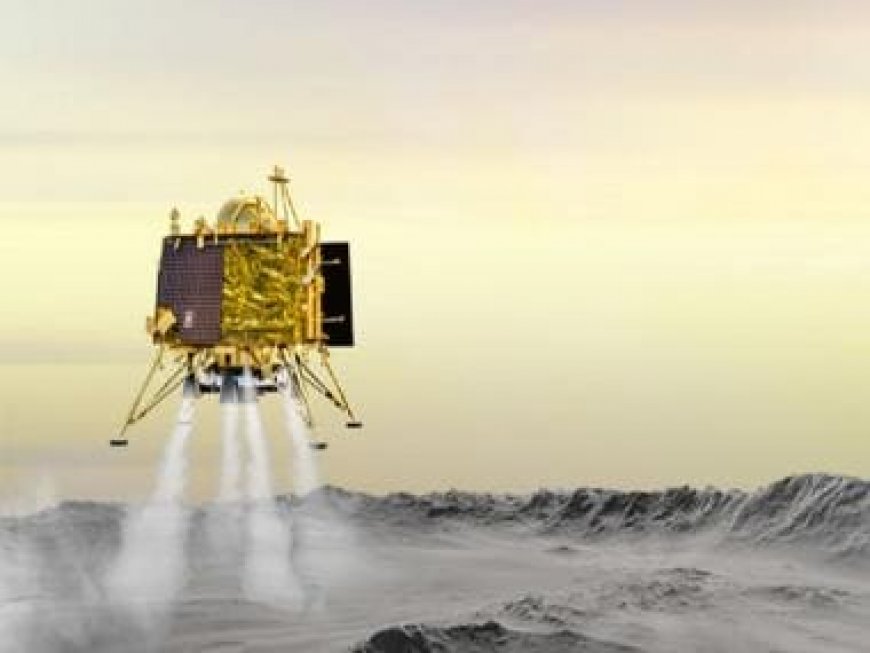7 things you didn’t know about Chandrayaan-3 lunar mission
7 things you didn’t know about Chandrayaan-3 lunar mission

The Chandrayaan-3 mission to the moon is a major stepping stone for India and ISRO. A successful landing will mean that India becomes the first country to reach the south pole of the moon, a feat that has proven to be immensely difficult for all space agencies.
From its rapid deceleration to its extremely difficult approach angle, the Vikram module’s landing is wrought with challenges. And even if it lands successfully, things would be just getting started for ISRO.
Here are 7 facts about the Chandrayaan-3 lunar mission, we bet you didn’t know about.
Severe deceleration
The Vikram lander of the Chandrayaan-3 is currently travelling about 25 kilometres above the lunar surface at a speed of 6000kmph. From this, it needs to come down to a speed of 1 metre per second, within seconds. Add to that, the Vikram lander needs to make a sharp 90-degree turn as it starts moving away from its orbit. ISRO will need to make some major adjustments at very quick, almost breakneck speeds.
First to the lunar south pole
With the Chandryaan-3, India aims to become the first country to successfully land on the south pole of the Moon. Like all planets and extraterrestrial bodies, the magnetic field and gravitational field around the poles behaves in a peculiar pattern. That is why, despite several attempts, no mission trying to land on the lunar south pole has been successful.
Overachiever
The propulsion module, which they initially thought would only keep chugging for about three to six months, is still going strong with over 150 kg of fuel left. This means it could keep doing its thing for many more years down the line.
Back on July 14 when they launched it, the propulsion module got a full tank with 1,696.4 kg of fuel. As it made its way to the Moon, it did some important manoeuvres on its journey to the Moon. The cool part is, it didn’t guzzle up nearly as much fuel as ISRO thought it would during all of this action.
Mission objectives
The Chandrayaan-3 lunar mission has a bunch of missions. Most of them aim to study the atmosphere of the moon to the soil and rocks, to see whether they can be used to facilitate human habitation in any way. During its 14 day mission, the Pragyan rover will look for water ice, which scientists say could support human habitation on the Moon in future. It could also be used for supplying propellant for spacecraft headed to Mars and other distant destinations.
Heavyweight
The Vikram lander with its four landing legs and four landing thrusters has a mass of 1749.86 kg, including 26 kg for the rover. This means on the Moon, the landing module weighs about 2800 kg. This makes the landing even more challenging for ISRO.
Looking for space fuel
Besides searching for water ice on the moon, the Pragyan rover will also be looking for Helium-3 or He-3. Helium-3 could be used as fuel for super cool nuclear fusion reactions. Fusion is the process that powers the sun and other stars, and if harnessed on Earth, it could provide a nearly limitless and clean source of energy without radioactive waste.
India’s lander less likely to fail
Lunar missions to the south pole have been all the rage for years now. However, landing in and around the poles is a challenging task. However, ISRO chief S Somanath revealed a clever strategy to make sure Chandrayaan-3’s Vikram lander sticks the landing. Even if its fancy sensors or engines decide to act up, they’ve got a plan to handle it like a pro.
“The entire design of the lander has been made in a manner that makes sure that it would be able to handle failures,” the Isro chief said
“If everything fails, if all the sensors fail, nothing works, still it (Vikram) will make a landing. That’s how it has been designed – provided that the propulsion system works well,” Somanath said.
What's Your Reaction?



























































